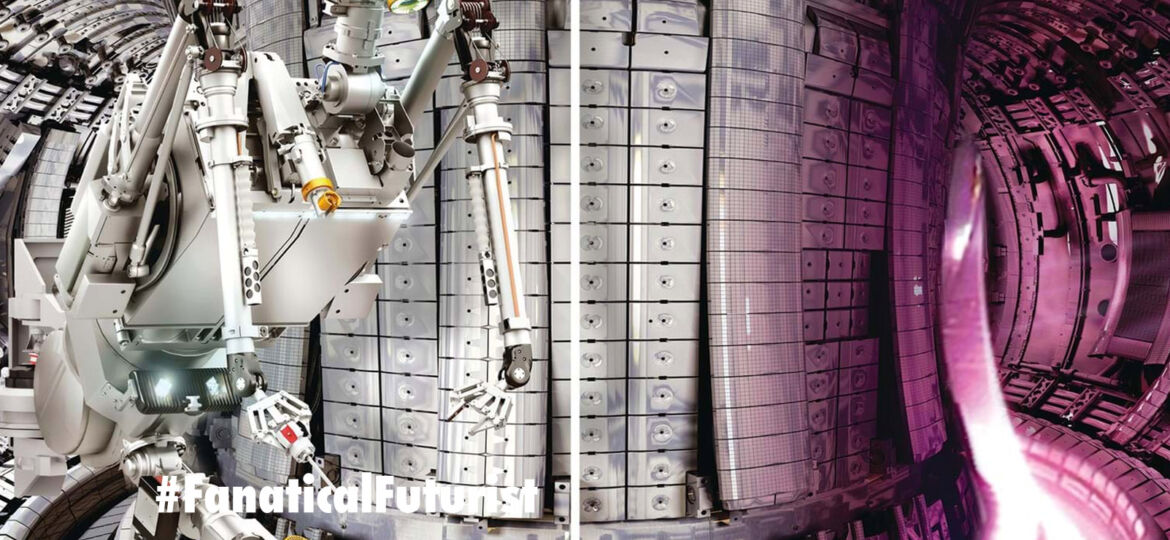
WHY THIS MATTERS IN BRIEF
Nuclear fusion is being hailed as the next revolutionary power source but the reactions are tearing the reactors apart, but now researchers have found a way to create the first generation of self-healing fusion reactors.
As anyone in the energy business will be able to tell you, there are no shortage of challenges when you’re trying to build the world’s first commercial “energy positive Star in a Jar,” or as they are more commonly known, fusion reactors. Just ask the guys behind the UK’s own star in a jar the ST40 which achieved first plasma earlier this year.
Researchers have been able to spark nuclear fusion reactions for years, heating hydrogen up to the point that it will fuse into helium, but even now most reactions, with a few exceptions such as Germany’s Wendelstein 7-X Stellerator, researchers create require more energy input than they produce.
In addition to getting the correct recipe of hydrogen ions and deuterium ions and helium-3, finding a way to heat it up, and then finding a way to suspend and contain it all, which is normally done using magnetic confinement chambers, it’s also now becoming clear to researchers that they will soon have another problem to contend with – how to build reactors that can withstand the immense temperatures and pressures of nuclear fusion.
When hydrogen fuses into helium it turns into plasma, burning at hundreds of millions of degrees Celsius and increasingly researchers are discovering that superheated helium, somehow, works its way into the metal components of the test reactors, and when you force helium into a solid material it forms bubbles that leave holes and, over time, those holes, as you’d suspect, destroy the structural integrity of the reactor, and boom!
As if we didn’t have enough challenges already…
The result of all this, of course, is that as, when and if we achieve sustainable energy positive reactions they could, quite literally, rip the reactors apart. Now though, thanks to a breakthrough, researchers in the US have found a way to create self-healing fusion reactors.
“Literally, you get these helium bubbles inside of the metal that stay there forever because the metal is solid,” said Michael Demkowicz, associate professor of materials science and engineering at Texas A&M University, “as you accumulate more and more helium, the bubbles start to link up and eventually they destroy the entire material.”
In their study, which has been published in Science Advances, Demkowicz and his team partnered with researchers at Los Alamos National Laboratory to study the effects of helium bubbles on Nanocomposite solids, thin layers of metal less than 50 nanometers wide, sandwiched in between thicker layers of a different material.
In their experiment the team placed a thin layer of copper between two thicker layers of vanadium, and then injected helium into the copper layer, and the results were surprising. The researchers witnessed the helium creating channels that spread through the nanocomposite material, rather than the bubbles they’d seen in normal metals, and if these channels create stable networks for the helium to pass through, the material might hold up for longer than the metals currently used in fusion experiments.
“We were blown away by what we saw,” Demkowicz said, “as you put more and more helium inside these nanocomposites, rather than destroying the material, the veins actually start to interconnect, resulting in kind of a vascular system.”
In addition to producing helium-resistant materials for fusion reactors, Demkowicz believes the findings could have implications across a wide variety of materials science research.
“Applications to fusion reactors are just the tip of the iceberg,” Demkowicz said, “I think the bigger picture here is in vascularised solids, ones that are kind of like tissues with vascular networks. What else could be transported through such networks? Perhaps heat or electricity or even chemicals that could help the material self-heal.”
The discovery of stable, naturally occurring networks of veins in structural metals such as this could bring us one step closer, on the long road, to building a commercial energy positive fusion reactor, and if Demkowicz’s optimism pans out, then it’s looking increasingly likely that future reactors could have vascularised networks through which we could pump chemicals to help the reactors heal themselves, and self-healing fusion reactors? Well, it doesn’t get any more futuristic than that, well, at least until we start talking about telepathy and tractor beams but hey, it’s still pretty cool!

















[…] field of nuclear fusion has seen some exciting advances of late, with scientists creating the first self-healing nuclear fusion reactors and truck sized fusion reactor concepts, as well as demonstrating how the massive energy and fuels […]